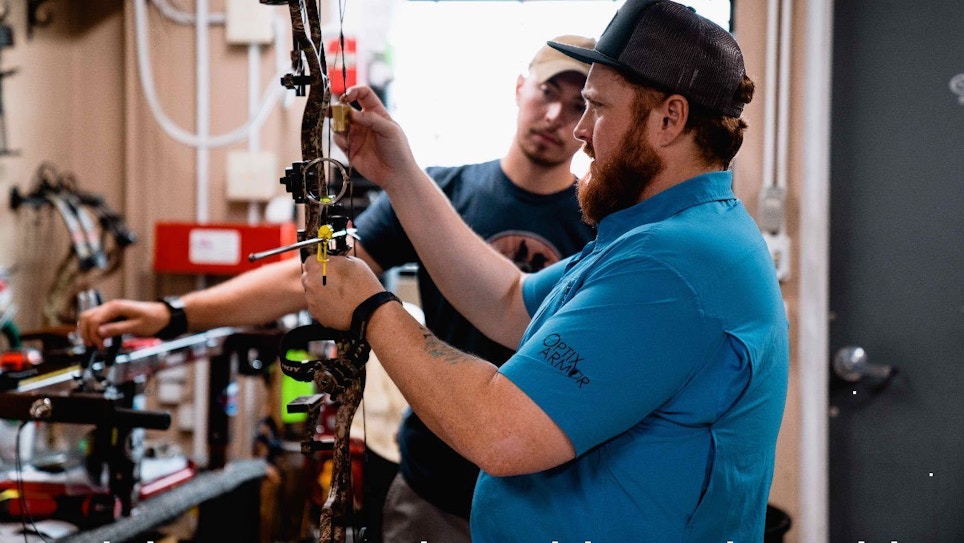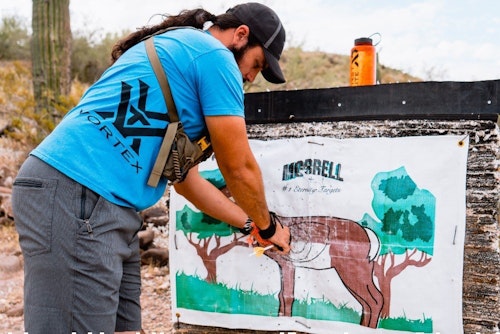“Speed Kills” is a term within the bowhunting world that is still alive and well. I say “still” because the term has floated around for quite some time. Whether it shows up in a magazine ad, video or how-to article, “speed kills” still breathes. The faster an arrow can reach an intended target, the less of a chance there is of said target jumping the string, as well as the less arrow drop one will experience. Not to mention the more force the arrow will have on impact, resulting in more pass throughs.
There is a bit more to this equation than just that, but most bowhunters aren’t aware of this fact. They see advertisements for steaming-hot ATA/IBO speeds, flashy marketing, and they are off to the races thinking they’re going to win. Heck, some might, but others may still be left scratching their heads, wondering what to do.
What Are ATA/IBO Speeds?
Right out of the gate, something that needs to be squashed immediately are expectations. I know that might sound harsh, but setting realistic expectations for customers, in terms of bow speeds, will set the record straight from the get go. Unfortunately, when most folks read advertisements for speeds spouted off by bow companies, they are thinking that is the speed they will be walking out of an archery shop with.
When I first started out shooting a bow and looking at new ones, I too fell victim to these consistently misunderstood speed ratings. As long as someone is getting set up with a proper rig for hunting, walking out of the shop with these advertised speeds isn’t going to happen. So, in light of that, it’s important that people are educated on what these speed ratings mean and how they are calculated. These guidelines are simply unrealistic for hunting scenarios and the vast majority of archers’ personal specs.
For instance, I know maybe a few people who actually meet the ATA guidelines of a 30-inch draw length and 70-pound draw weight. They certainly aren’t shooting a 350 grain arrow, though. So, even they aren’t hitting the feet per second listed on the bow. Instead of archers wondering if there is something wrong with their bow, they should know these guidelines for speed ratings beforehand.
ATA Guidelines
- 30-inch draw length
- 70-pound draw weight
- 350-grain arrow (5 grains per pound of draw weight)
IBO Guidelines
- Maximum draw weight of 80 pounds +/- 2 pounds
- 400-grain arrow (5 grains per pound of draw weight)
- No draw length requirements
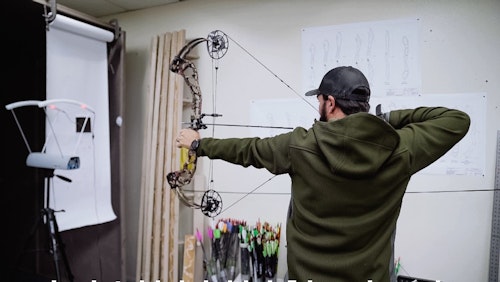
Kinetic Energy vs. Momentum
When I hear someone talking about arrow speeds and what not, 9 times out of 10 they mention how much kinetic energy they are getting. Kinetic energy is definitely the topic that gets the most press in these need-for-speed conversations. And while KE is important no doubt, the thing that doesn’t get that much coverage is momentum. These two words are used in tandem, as if they’re the same thing, and they’re not.
It's important to understand the difference between kinetic energy and momentum to avoid running too far down the speed demon route. A great way to explain this, without getting too nerdy with equations, is that KE is the energy an arrow has in flight when it hits a target. Speed is a huge factor here. Momentum is the energy an arrow has through a target. Weight is the bigger factor here and ultimately what will help retain energy through said target. This means that more force will be required to stop the arrow’s motion. A light arrow with a high KE isn’t going to have the energy retention that a heavier arrow will, resulting in less penetration. We need speed, but if that is the only thing a hunter focuses on, issues can arise in the field, such as an arrow not punching through what it needs to penetrate.
Benefits of More Arrow Speed
I’ve been bagging on fast arrows up until this point, so let me talk about the benefits of more arrow speed for a stretch. Arrows flying at higher rates of speed aren’t all doom and gloom. A huge benefit for bowhunters shooting a quicker arrow is going to be more room for error. What I mean by this is their arrow trajectory is going to be much flatter than that of a slower arrow. In turn, should one be guessing yardage in a hunting scenario, being spot-on with their estimate isn’t nearly as crucial. This also makes gap shooting much more accurate as well if a hunter is indeed using a multi-pin bowsight. Pin gaps are much smaller with a faster arrow. Aiming between that 30- and 40-yard pin for a 35 yard shot is much more precise when pin gap is smaller.
I mentioned earlier that a light arrow with a high kinetic energy won’t have the energy retention that a heavier arrow would after impact. This is true, but what about a heavier arrow with a high kinetic energy? It’s commonsense really. Heavy arrows will fly slower than light arrows. That doesn’t mean we can’t get those things turning and burning, though. They may not fly as fast as those lighter setups, but they can move. A heavier arrow traveling at a higher speed is going to be a win/win scenario. Of course, one might run into arrow spine issues trying to get there, but the point remains: A heavier arrow moving at a higher rate of speed isn’t a bad thing. It would be the best of both worlds. And with a setup like that, a person would be ready to hunt pretty much anything. Not having to switch things up jumping between species is an ultimate win. Beware the hunter with one bow, for they know how to use it.
Negatives of More Arrow Speed
There are some drawbacks to more arrow speed. The first is the potential for less penetration. This really pertains only to those looking to build an absolute speed demon of a bow rig though. A great way to get more speed is to shoot a lighter arrow. In this scenario, the shooter would be decreasing the momentum, which would decrease the stopping power it takes to halt the arrow. On an animal, this can spell bad news should one hit a rib bone or shoulder blade, especially on a big animal such as an elk. Hearing about hunters getting very little penetration followed by inevitably losing an elk is unfortunately a common discussion each hunting season. Speed is definitely attractive on paper, but it isn’t everything.
Another gear concern that sticks out is the bow itself. Speed bows are generally much harder to shoot than their comfort driven brethren. Draw cycles are much more aggressive, valleys are almost non-existent, and forgivingness is squashed to a minimum. All of these can have an effect on both the mental and physical side of a shooter. I personally remember owning a speed bow in my early years of bowhunting. Because the draw cycle was so aggressive, it caused me to not even want to shoot my bow, due to it wreaking havoc on my shoulder. It was painful. And then there was the forgivingness, or lack thereof. Because the brace height is shorter on these speed demons, it brings having a good shooting technique and form to a new level. In a heat of the moment hunting scenario, let’s face it, much of our inhibition sails out the window. Shots are sometimes rushed, triggers are punched, and form falls victim to Mother Nature. A bow that is harder to shoot might not be the best choice for some, no matter how much faster it sends an arrow. In the end, it just comes down to the shooter though.
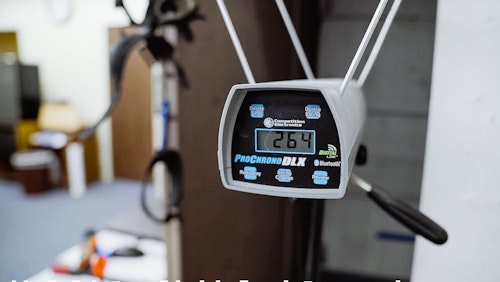
Match the Setup to Your Skill Level
In order to arrive at your proper setup, a little bit of digging needs to happen. How experienced are you? Are you hunting or target shooting? If you’re partaking in target archery only, then momentum isn’t important because penetration isn’t a concern; you wouldn’t suffer too much shooting a super-fast light arrow, as long as your form and technique were good.
If you’re bowhunting though, which species are you planning to pursue, and how are you planning to hunt? A bowhunter in a treestand shooting at whitetails is a different beast than someone packing into the backcountry in search of bull elk. With whitetails, speed is high on the list of importance, as they are known for jumping strings. They’re also not a massive animal constructed of dense bone like an elk. The elk will require a heavier arrow that will lessen arrow speed, but help with momentum and carrying that arrow through the animal. In both cases it’s more about matching the arrow speed to the shooter and situation, not flat out shooting the fastest arrow imaginable.
Arrow Speed or Arrow Flight?
Let’s chat arrow flight for a second here. No matter how fast an arrow is traveling, if it isn’t flying straight, it’s going to take much longer to recover in flight, which will cause penetration to suffer downrange. The reason for this is all of that energy isn’t focused straight down the middle of the shaft, which will help drive the arrow through the target. Picture trying to dig a hole with a shovel. We use our foot and arms to drive the shovel straight down into the ground in order to really get in there for a maximum scoop. Now picture trying to do that on an angle. It’s going to be far more difficult to dig said hole when our applied force isn’t traveling straight down the handle of the shovel and into the ground. The same logic goes for an arrow. This is where a properly tuned bow is paramount. Good arrow flight is much more important than arrow speed.
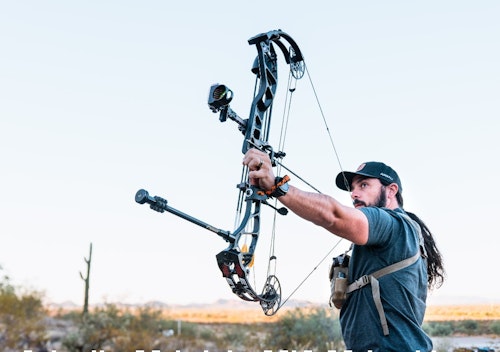
Final Thoughts
So, does arrow speed actually kill? The answer is yes, but it isn’t alone, and has some help doing so.
Teamwork makes the dream work. It is an ingredient within a recipe for what I like to call the “kill square.” Sounds pretty intriguing right? It’s pretty simple. The recipe includes a pinch of arrow speed, a dash of arrow weight, a generous scoop of proper arrow flight, and a heavy dosage of accuracy. All of these factors work together, as well as affect one another when any tweaks or inconsistencies are made or come about. A hunter can have the fastest and heaviest arrow on the planet, but if they aren’t accurate, it doesn’t mean squat. And if their arrow isn’t flying straight, their penetration will suffer no matter how much heat is behind their arrow.
We put a lot of thought into the little things, and sometimes it’s probably too much. Splitting hairs between three fletch and four fletch arrows is petty when it comes to something like accuracy. So, instead of focusing on minor tweaks to get an arrow moving as quickly as possible, why not focus more on ability? Work toward building a solid foundation in your archery game in order to increase your accuracy. Practice often. And don’t be afraid to visit a pro shop if you’re having a hard time with your shooting. In the end, and above all else, it is accuracy, good arrow flight, and hunting skill that kills. Speed is a lesser part of the equation.
